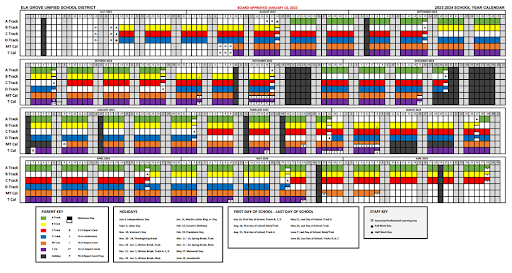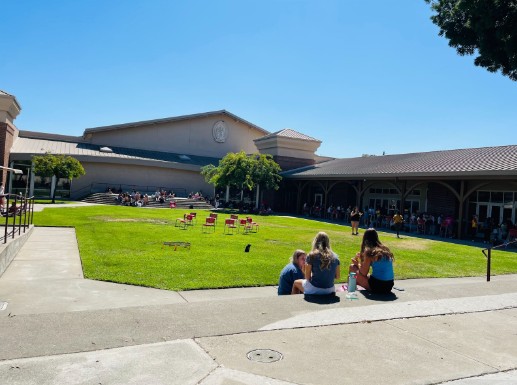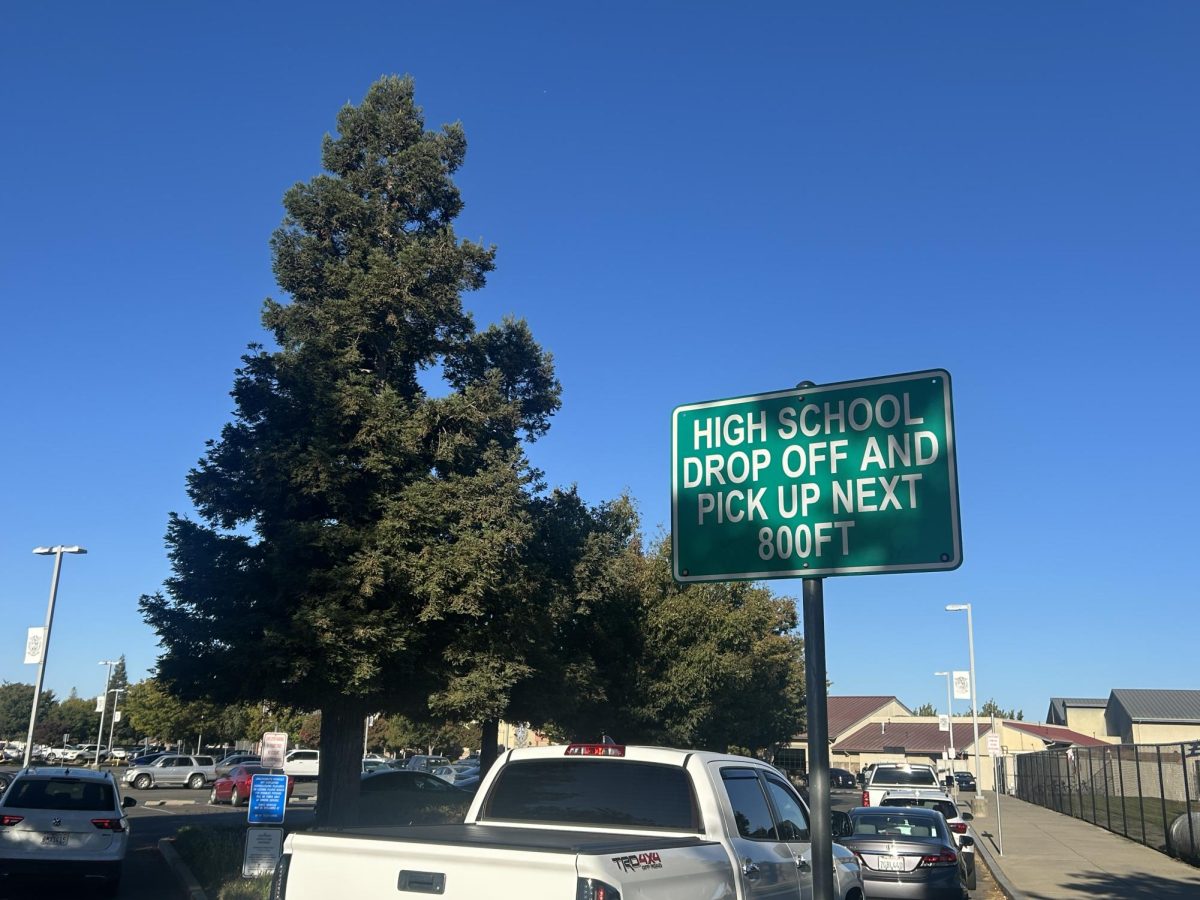More and more California schools have switched to block scheduling, with 23.2 percent now using the alternative system, according to the National Center for Education Statistics.
In the Elk Grove Unified School District, where an increasing number of schools have moved to block scheduling, the change’s potential effect on students’ learning is a subject of debate.
In a typical block schedule, students would take either four classes or eight classes per term. In an alternating A/B block, students take eight classes that meet every other day, often on an odd-even schedule. In a 4×4 block, students take four classes in the fall semester that meet for roughly 90 minutes every day, and then they take four new classes in the spring.
Teagan Keplinger, the principal of Pleasant Grove High School, favors the switch to a block schedule. Pleasant Grove is one of the last schools in the EGUSD that’s still using a traditional schedule, and Keplinger said instituting a type of block into PGHS would give students more opportunities.
“We have academies such as band, Avid and ASB which make it challenging for students to get their required courses during the school year,” Keplinger said. “That’s why students take zero periods and summer school.”
Many teachers, however, have expressed their exasperation with the prospect of the change out of concern for the effects on student learning.
ri Burke is an AP Calculus teacher at PGHS, and she is in favor of keeping the traditional schedule.
“For other subjects, it might be great,” Burke said. “But for math, it’d be a little challenging. For block schedules, students don’t have math every term, so that’s a concern that I have. Also in terms of instructional minutes, they often have less time.”
Some students have also voiced concerns about how their school experience might be harmed by the change. Amina Babiker, a junior at Pleasant Grove, opposes the change to a block schedule.
“As teenagers, we don’t have the longest attention span and switching to a block schedule usually makes classes longer than an hour,” she said. “I feel like learning the same subject for an hour can already sometimes be boring, so increasing the time wouldn’t really help with our focus.”
Advanced Placement students could be more disadvantaged by block scheduling than others, as those in a 4×4 block who won’t have the class in the spring, when AP tests are offered, would be at greater risk of forgetting the material.
“They have to be very busy,” Burke said. “(It’s) so much harder for students who don’t have that class (in the spring) to do well.”
Babiker said she had forgotten most of the material for her AP chemistry exam within two months of taking the test.
With the block, there would be fewer yet longer class periods during the day; However, the 4x4 model features two sets of four classes that would rotate each semester – leading to learning breaks that could be months long. For example, students could be enrolled in a math class in the fall of their sophomore year and not be enrolled in math again until spring of their junior year – a gap of an entire year.
Despite preferring the change, Keplinger agreed that it could be difficult adjusting to a different way of learning.
“It just depends – the block schedule opens up more course options for students, which is a positive,” Keplinger said. “Students have more class periods, which can be a possible positive depending on how they learn.”















Anonymous • Sep 13, 2023 at 4:29 pm
It is interesting how many schools are switching to a block schedule. I like how you got many students comments! Great job.